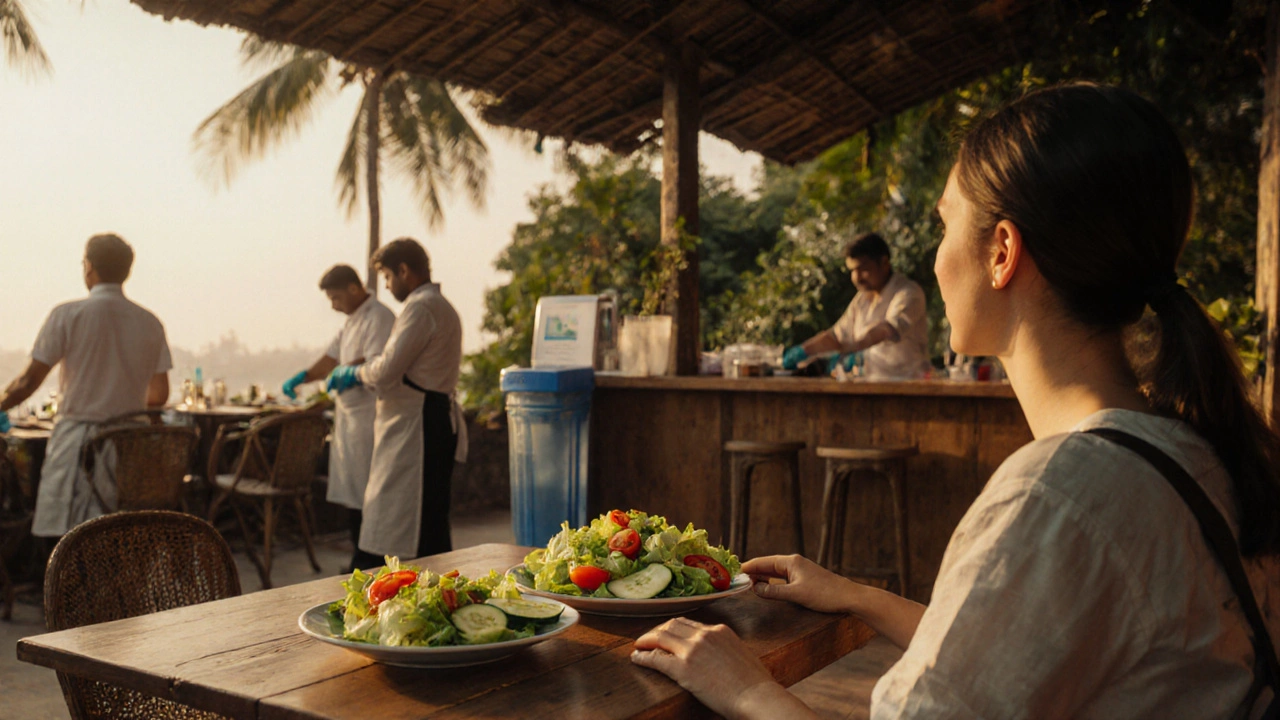Safe Street Food in India
When you think of safe street food, edible dishes sold openly on sidewalks, carts, or markets that meet basic hygiene standards and don’t cause illness. Also known as street eats, it’s not just about flavor—it’s about trust. In India, where food is part of daily life and culture, finding safe street food means knowing where to look, not just what to eat.
Many travelers worry about stomach issues from roadside snacks, but the truth is, some of the cleanest and tastiest food in India comes from small vendors who’ve been serving the same spot for decades. Look for stalls with high turnover—crowds are a sign of freshness, not risk. Vendors who use fresh oil, cover their food, and wash hands often are the ones you want. In cities like Delhi, Mumbai, and Jaipur, you’ll find local favorites like pani puri, chaat, and jalebi sold by families who depend on repeat customers. These aren’t random carts; they’re trusted businesses. And unlike tourist traps, they don’t need fancy signs—they just need loyal regulars.
Hygiene practices, the daily habits food sellers use to keep meals clean, from clean water sources to covered serving areas. Also known as food safety habits, they’re not always visible, but you can spot them. Watch if the vendor uses gloves or tongs, if the cooking surface is wiped down between orders, and if drinking water is separate from washing water. In places like Varanasi and Mysore, vendors often boil water for tea or puri batter. That’s not luck—it’s tradition. And in states like Punjab and Tamil Nadu, where street food is a daily ritual, cleanliness is built into the culture. You don’t need a health inspection sticker to know it’s safe—you just need to pay attention.
Then there’s the local food culture, the unwritten rules and habits around how and where people eat in a region, passed down through generations. Also known as eating traditions, it’s your best guide. In Goa, you’ll see seafood snacks served on banana leaves. In Kolkata, jhal muri is sold in paper cones by vendors who’ve been doing it since the 1970s. In Ahmedabad, the street food markets have dedicated water taps and trash bins—because the community demands it. These aren’t random practices; they’re survival skills. The people who sell food for a living know that one bad batch can ruin their name for years. So they protect their reputation harder than any restaurant manager.
Don’t assume that expensive restaurants are safer. Some of the worst cases of food poisoning come from places that look clean but use frozen ingredients or reheat oil too many times. Meanwhile, the guy frying samosas on a single burner outside the temple? He uses fresh oil every morning, and his customers are the same ones who’ve been coming since they were kids. That’s the real test.
What you’ll find in the posts below isn’t a list of the most famous snacks—it’s a guide to the safest ones. You’ll learn which cities have the cleanest street food scenes, what signs to look for before you bite, and which dishes are low-risk even for sensitive stomachs. You’ll see how locals eat, what they avoid, and why some stalls are worth waiting for. No fluff. No guesswork. Just real, tested advice from people who’ve eaten their way across India without getting sick.
- Nov, 21 2025
- 0 Comments
Is it safe to eat salad in India? Learn how to enjoy fresh vegetables without getting sick-smart tips for travelers in South India on where to eat, what to avoid, and how to stay healthy.
More